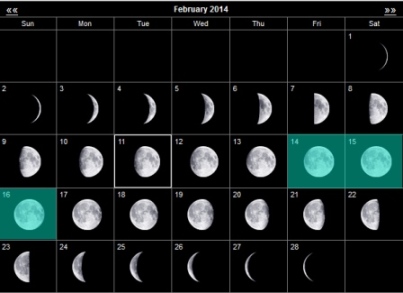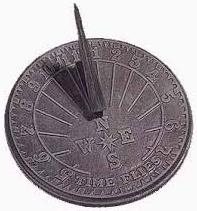Where am I in time and space? Has always been an important question. When and where to draw the herds? Can I sow or reap? Should I stockpile... Al 1.000’s of years ago people built observatories to assess time.
Nowadays we know no stars or constellations anymore. We have GPS and maps to get back home. And clocks and calendars. Otherwise we would probably have a lot more attention to astronomy.
Year
A year is the time in which the earth revolves around the sun.
Our current Gregorian calendar has 365.2425 days (365d 5h 49m 12s). Every four years there is tallied a day to compensate for the fact that the relationship to the sun is not exactly to measure in full days. Such a leap year has then 366 days.
To further correct the errors caused by this adjustment each year that is divisible by 4 but also by 100 is not a leap year unless it is divisible by 400.
“The years fly by as the day take long.”(Aurelien Scholl)
' Watch: slave enchain of the twentieth century. “(Hans Van Straten)
Season
A season is an annual 3-month period: spring, summer, autumn and winter. In temperate climate seasons are well distinguishable. In extreme zones are few changes. In the tropics it is always summer. They knew three seasons in ancient Egypt and two in Indonesia, the dry and wet monsoon.
The seasons are caused by the angle of inclination of the earth's axis relative to the axis of its orbit around the sun. In astronomy, the season begins at the moment the sun rises in the tropics or the equator, at a precisely defined time that varies from year to year. In leap years the beginning of a season usually falls a day earlier.
The shortest day on the northern hemisphere is around 22 December. This is about the day the solstice (winter solstice) occurs. The sun is as far south as possible.
The longest day falls around June 21.
If you observe daily sunrise and sunset you see that the point at which the sun appears/ disappears on the horizon each time moves a little. The day after the final point is reached, this shifts again to the other direction. If you mark this point on the horizon (a stick, tree, stone, house..) so you know where / when the solstice (return of the point in the other direction) occurs. And when the longest and the shortest day fall.
The longest day gives the shortest shadow.
The shortest shadow of an upright object on a horizontal plane falls on the longest day (for the northern hemisphere around June 21) on the true noon. The sun then follows its top route across the sky and stands at 12pm exactly in the south. In the afternoon, the rays make an angle of 61 degrees with the ground. In Flanders and in the south of the Netherlands indicates that a shadow length of approximately 52% of the height. In the north of the Netherlands approximately 53%.
On the shortest day of year (December 22) the sun is lowest in the sky. In the afternoon, then she makes an angle of 15 degrees with the earth. The shadow of an object of 1 meter high, extends about 3.7 meters to the north.
The seasonal change is about 20 Marsh, 21 June, 22 September and 21 December.
The folk meteorology says there is no frost after the late spring (11-15 May).
The first frost can come around mid-October.
The 3 weeks before and after the winter solstice (21/12) (later after Christmas, 25/12) used to be known as the 6 "dark weeks". People made sure everything was in and around for 1 to a few days: coal, firewood, food. etc. to get out as little as possible. December is the darkest month (for the Benelux) with an average of only 45 hours of sunshine. Since 2000 the sunny hours seem to be increasing (until 2017). Candlemas (2 February) was seen as the end of the cold winter. (It replaced the Imbolc (or Oimelc) Celtic fertility festival).
Month
Most calendars count cultural historical 12 months in a year. There will approximately 12.5 lunar cycles in a year.
Many of our (angle) and time formats is based on the 12 - and 60 duodecimal and sexagesimal positional numeral system of the ancient Babylonians.
"Sometimes the end of the month lasts three weeks.”(Marcel Achard)
Moon
 The moon revolves around the earth in 27.3 days, but because the Earth also rotates elapse 29.53 days between two full moons.
The moon revolves around the earth in 27.3 days, but because the Earth also rotates elapse 29.53 days between two full moons.
A synodical month (lunation) is the time between two new moons, 29.530 588 calendar days or 29 days, 12 hours, 44 minutes and 2.8 seconds.
The sidereal month is the average time in which the moon makes a complete orbit around the Earth relative to the fixed stars and takes 27.3217 days.
If there twice in the same month occers a full moon, the second full moon is called a blue moon. This occurs about every two to three years.
A mnemonic to see whether the moon is in the first or last quarter. The shape of the moon is recognizable in the first letter of the French word : primier (quartier) and dernier (croissant). Or, begin -end.
Week
There are 52 weeks of 7 days in a year. 7 days is a quarter - moon, the period in which God created the earth according to the Bible.
Day
A lasts 24 hours, the time in which the Earth rotates on its axis.
One day has four sessions: morning, afternoon, evening, and night.
If 24/day is not enough, take also the night. (Henri PointCarré)
Hour
Hours were divided into fourths, fifths and minutes. Nowadays the minute format is standardized and commonly used.
To measure the time hourglasses, candles showing the burning time of the candle or on the mirror standing behind, and also water clocks were built.
The Fenjaan or Persian water clock consists of a tub of water, in which is put a bowl with a hole. If the bowl is filled up and sinks, this is one unit. It was e.g.. used to measure how long anyone who had invested with it, should make use of the qanats (underground, dug water channels) in order to irrigate his land.
“The wristwatch is the handcuff of the time.”(Sigismund von Radecki)
Hour Record: 61 minutes. (Guy Mortier)
“It is possible to have too much. Someone with a watch knows what time it is. A man with two watches is never quite sure. “(Lee Segal)
Jesus got a watch for his solemn communion, and then it has become a tradition. (J. M. Gourio)
Sundial
A sundial is an instrument that with the shadow of a stylus on a scale designates time.
 The earth rotates on its axis. The shadow of an object changes direction evenly. If the shadow points north (in the southern hemisphere to the south) it is exactly midday. The sun is in the south (in the southern hemisphere to the north) and in its highest position that day, just above the meridian. It is 12 am local solar time. From here you can create a partition in hour lines.
The earth rotates on its axis. The shadow of an object changes direction evenly. If the shadow points north (in the southern hemisphere to the south) it is exactly midday. The sun is in the south (in the southern hemisphere to the north) and in its highest position that day, just above the meridian. It is 12 am local solar time. From here you can create a partition in hour lines.
The shadow pin is (for the most common sundials) a pole style, a wire or rod pointing to the celestial pole. Hence the name pole style sundial.
To indicate all the year the correct time, the style must be parallel to the axis of the earth. He then points to the north (in the southern hemisphere to the south), to the pole, in a corner of the base equal to the latitude. In Utrecht, so that is 52°. And in Cape Town -35°.
Perpendicular to the pole style we set the dial plane. This flat is located in the equatorial plane. This sundial is also called an equatorial sundial.
The pole style will give a shadow line on the equatorial plane which naturally turns with the sun.
The sun captures every hour 15 degrees off in its orbit (360/24 = 15) and, therefore, the shadow line will rotated 15° further, even after every hour. So you have to make a 15 degree hour line.
“Killing time is a form of legitimate self defense. “(Paul Jacobs)
Try to be happy in days with an a. (Hugo Tresinie)
Ancient Egyptian obelisks, constructed about 3500 BC among the earliest shadow clocks.
Water clocks, or clepsydrae, were commonly used in Ancient Greece.
Remember that one year also counts 365 nights! (Hugo Tresinie)
Sundial: pleasant when summer is on a Sunday. (Gerard Brands)
How long a minute lasts depends on which side of the bathroom door you are. Arthur Bloch)
